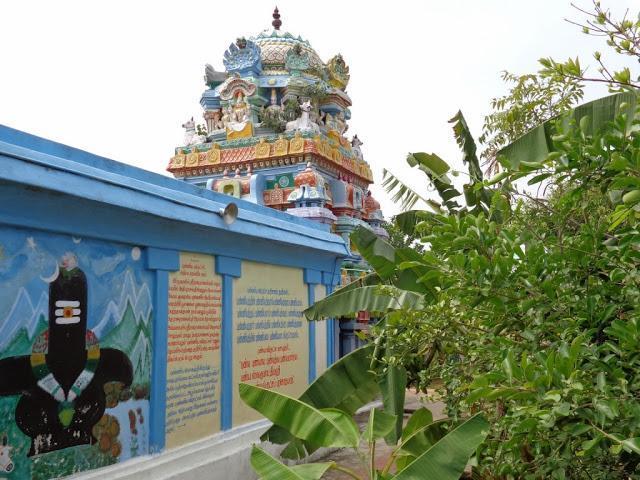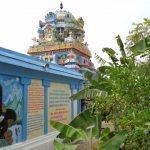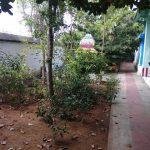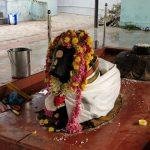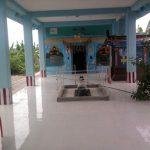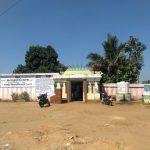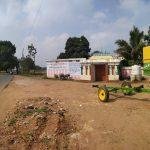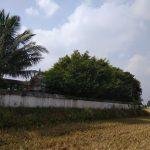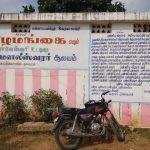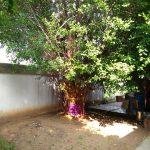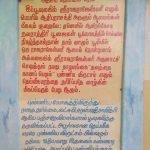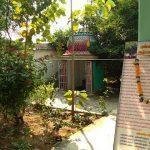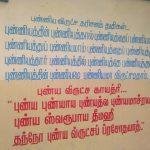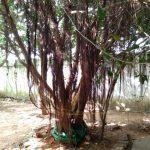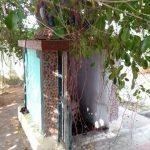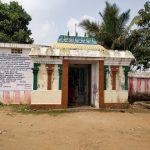Contents
Chandramouleeswarar Temple, Thazhamangai, Thanjavur
| Date built: | – |
|---|---|
| Deity: | Chandramouleeswarar |
| Architectural style: | Tamil Temple architecture |
| Major festivals | – |
| Locale: | Thazhamangai |
| District:: | Thanjavur |
| Address: | – |
| Phone | – |
The place was called as Pavathaayamangalam during Pallava Period and was called as Nitha Vinotha Valanattu Kizhar Kutrathu Pavathayamangalam during Chola Period. During Sundara Chozhan’s regime, there were great floods in Kaveri due to which all the villages including Thazhamangalam were completely washed away. The only structure remaining untouched was this temple.
There is a small entrance arch. The Temple is very small with just single prakaram. Nandhi and Balipeedam are found facing the sanctum. There is no Dwaja Sthambam in this Temple. Presiding Deity is called as Chandramouleeswarar and Mother is called as Sri Raja Rajeswari. There are not that many temples where the Mother Goddess manifests herself in her Rajarajeswari form. So, this temple is quite special.
Temple Opening Time
The temple remains open from 06.00 a.m. to 11.00 a.m. and 04.00 p.m. to 08.30 p.m.
Festivals
Mahasivarathri in February-March, Aipasi Annabishekam in October-November and Margazhi Tiruvadhirai in December-January are the festivals celebrated in the temple. This Temple is one of the seven places forming seven Holy Kshetras in and around Pasupathi Koil where the annual Saptha Sthanam festival is held in the month of Panguni. The Deities from the main temple Chakkarapalli are taken in a procession in very huge “kannadippallakkoo” weighing more than 2000 Kgs by bearers on bare foot over more than 40 Kms in two days nonstop except for few hours halt at Kudamurutti river sands for the fireworks show at 4 am.
Prayers
Those who are burdened with lack of peace in the family should resolve to do regular worship at this temple on Tuesdays, Fridays and on the night of the darshan of the third phase of the crescent moon. This steadfast worship will help bestow peace and tranquility in one’s family.
Architecture
Legend / Local stories
Chandramouleeswarar:
When Chandran was afflicted with Daksha’s curse for being partial to Rohini, He came along with his wife to this Thazha Vanam and performed penance, though the area was infested with lot of snakes (even today, in the villages in TN, people do not use Thazhampoo much as it is believed to attract snakes). She got relief for her husband by this worship. Lord took the third phase of the Moon and kept it on his Head. Hence, he is called Chandramouleeswarar / Indusekharan / Chandrasekharan.
Thazha Mangalam:
Once, this area was full of Thazha trees (Screw pine flower) and hence came to be called Thazha Mangalam.
Moondram Pirai Darshnam:
It is believed that on the sixth day of Navarathri (Sashti), Parasakthi visits this temple in the company of another Sapthamadha, Mahendri (this form of Mother is out of Indra and also known as Indrani). The darshan for the Mothers in this Temple is called Moondram Pirai Darshnam.
Thazha Mangai:
Sapthamadha, Mahendri bowed and prayed Lord Shiva here (bowing in Tamil is called Tazh Panidhal). Hence, this place came to be called Thazha Mangai.
Mother appeared as an elderly mother to Nadha Sharma couple:
In this temple, Mother appeared as an elderly mother to the Nadha Sharma couple during their visit here.
Mukthi Sthalam:
One of the sayings of the Siddhas is “Chithirai Sadayam Muthi Thara Thazhayam” (Worshipping the Lord on the Sadayam star of Chithirai month ensures Mukthi). Hence having darshan of the Lord on that day which falls in April-May and applying sandal paste to the Lord, is considered very auspicious. This is believed to give contentment and happiness for three generations.
Sandal Alankaram:
When Rajarajan was constructing the Thanjavur Big Temple, there was a problem in installing the Great Nandi. He consulted Karuvurar, one of the 18 Siddhars. He came to this temple along with the King’s family, prepared Sandal paste and arranged for Sandana Kaappu (Sandal decoration of the Lord). The pleased Lord ensured that there was no further hurdle in installing the Nandi in Thanjavur. The grateful King started visiting this temple on every Sadayam (his birth star) and repeated the Sandal Alankaram. The fact that his monumental work is viewed with awe even today, is enough proof for the effectiveness of prayer in this temple.
People worshipped Lord Shiva here:
Chandran, Chaya Devi, Agasthiyar and Rajaraja Chozhan worshipped in this temple.
Parihara Sthalam for eye related problems:
This is also Parihara Sthalam for eye related problems. The affected person should come to this temple, grind the sandal paste and arrange to decorate the Lord. He / She should also arrange for decorating the Ambal with Thazhampoo. This is to be done on Sundays (if right eye is affected) and Mondays (for left eye) after observing Mouna Vratham (total silence). Locals believe that this ensures complete cure from the eye problems.
Photo Gallery
How to Reach:
The temple is located at about 1 Km from Pasupathikoil Bus Stop, 3 Kms from Pasupathikoil Railway Station, 4.5 Kms from Ayyampet Railway Station, 12 Kms from Papanasam, 13 Kms from Thanjavur, 13 Kms from Thiruvaiyaru, 14 Kms from Thingalur, 12 Kms from Thirupazhanam, 26 Kms from Kumbakonam and 68 Kms from Trichy Airport. The Temple is situated on Thanjavur – Kumbakonam Road.
Contact Details
Official Address

